
Layout, design and features …
The glass top of the Atlasio SHD Mini is made of tempered 5 mm glass in white, whereby the glass surface can be written on with water-soluble pens and also has a few internal features.
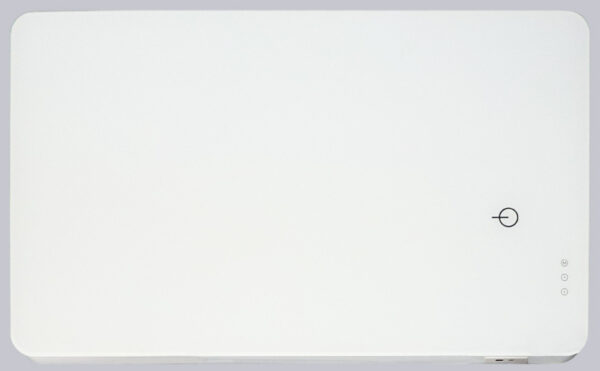
Under the tabletop you can immediately see the cabling and the suspension of the glass plate on the metal frame. On the far left you can see the electronic control with the touch field, directly next to it the Qi Wireless Charger charging pad, on the bottom left the cabling of the USB ports and at the bottom center the small approx. 44×28 cm drawer. There is additional space for cables in the remaining area, with the transmission rod later located in the middle area and four threaded holes integrated on the left and right where the table legs are screwed on.
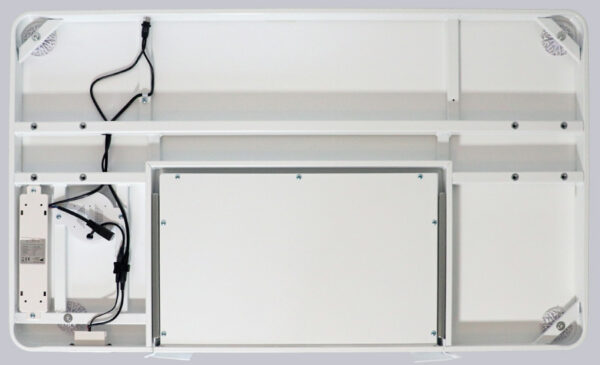
Here you can see the wiring of the individual components again. It is noticeable that the cables are not strain-relieved and in some cases the outer cable sheathing has been removed a little too far. Here, the cable sheathing should be clamped in the respective modules to ensure greater safety.
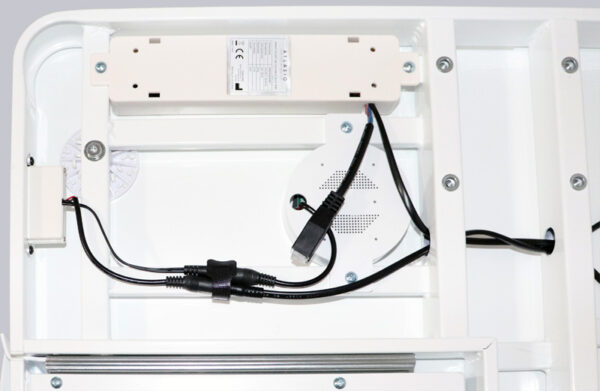
Everything is then connected to the power supply unit, whereby the “speaker plug” is protected against polarity reversal and secured against possible disconnection.
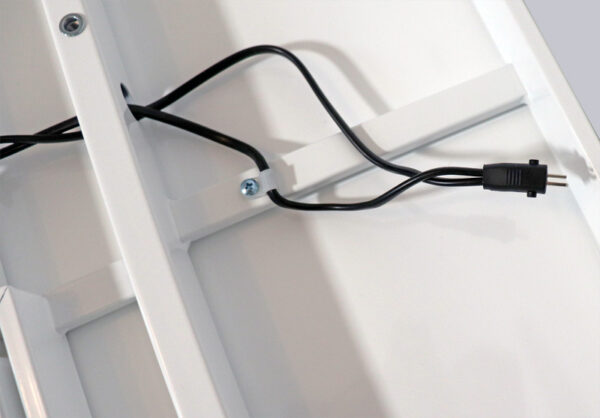
You can immediately see all the important controls on the glass top. The picture above shows the large Qi charging symbol, the “M” touch field on the right and the two up and down buttons below it.
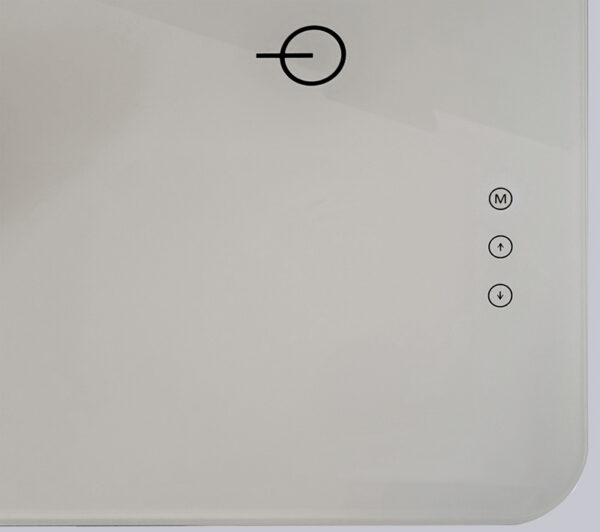
On the front of the metal frame there is also a USB Type-A and Type-C socket as well as a small drawer for manual removal.
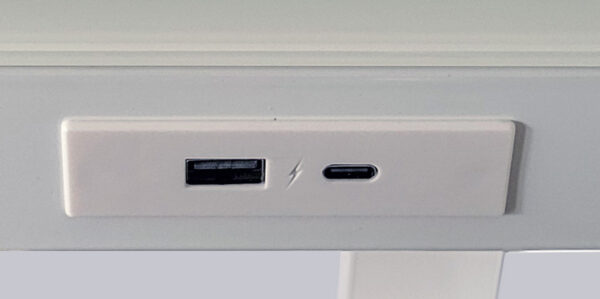
Overall, everything is very well made and leaves a positive impression, apart from a few minor wiring issues.
After all the theory and technical data, let’s move on to the practical testing.
Atlasio SHD Mini and Dynamic Chair Practical testing …

